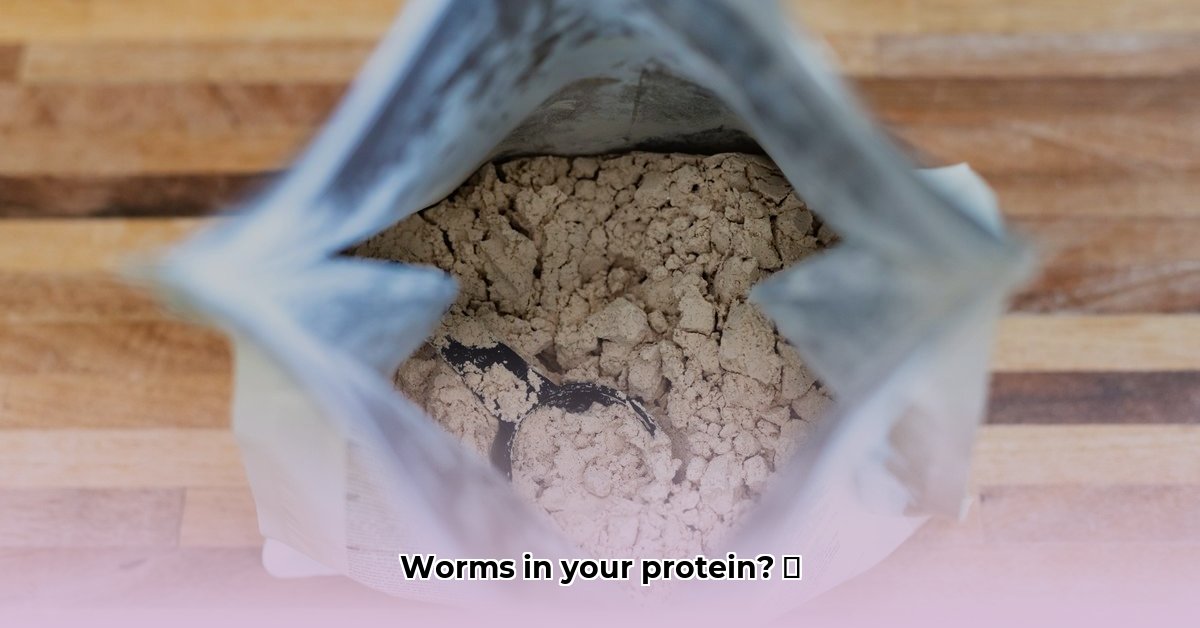Let’s address the creepy-crawly question that’s been bugging you: Is your protein powder secretly made of worms? The quick answer is a resounding no. The overwhelming majority of protein powders on the market are derived from common sources like whey, soy, pea, casein, brown rice, or eggs. So, breathe easy, your post-workout shake is likely worm-free.
The Buzz About Insect Protein
While your current protein powder is probably not made from insects, insect-based protein does exist, and it’s generating quite a buzz. Think of it like this: beef and bison are both sources of protein, but one is significantly more mainstream. Insect protein is still the bison in this scenario – a niche market, but one with growing potential.
So, why are insects even being considered as a protein source? Two key reasons: they’re incredibly sustainable and surprisingly nutritious. Raising insects requires significantly less land, water, and feed compared to traditional livestock, making them a more environmentally friendly option. Plus, they’re packed with protein, essential amino acids, fiber, healthy fats, and often a range of micronutrients like iron, zinc, and B vitamins.
Decoding Your Protein Powder Label
The protein powder you’re likely using comes from familiar sources:
- Whey Protein: Derived from milk, it’s a complete protein, popular for its quick digestibility and muscle-building benefits.
- Soy Protein: A plant-based complete protein, a staple for vegetarians and vegans, and often preferred by those with dairy sensitivities.
- Pea Protein: Another plant-based option, known for being hypoallergenic and easily digestible.
- Casein Protein: Also from milk, it digests slowly, providing a sustained release of amino acids, making it a favorite for nighttime protein supplementation.
- Brown Rice Protein: A hypoallergenic plant-based protein that, when combined with other plant proteins, offers a complete amino acid profile.
- Egg White Protein: A good source of protein and essential amino acids.
If you’re still concerned about accidentally consuming insects, checking the label is simple. Manufacturers are required to clearly list all ingredients. Look for terms like “cricket flour,” “mealworm protein,” “black soldier fly larvae,” or the specific scientific names of the insects. If you don’t see these, your protein powder is likely from a conventional source.
Insect Protein: Benefits, Drawbacks, and the “Ick” Factor
Let’s be honest, the thought of eating insects isn’t appetizing to everyone. Overcoming this “ick” factor is a key challenge for the insect protein industry. However, it’s important to weigh the potential benefits and drawbacks:
Pros:
- Sustainability: Insect farming has a significantly smaller environmental impact than traditional livestock farming, using less land, water, and feed.
- Nutritional Value: Insects are a rich source of protein, essential amino acids, healthy fats, fiber, and various vitamins and minerals.
- Food Security: As the global population grows, insects offer a potentially sustainable way to meet increasing protein demands.
- Hypoallergenicity (Potential): Some research suggests that certain insect proteins may be less allergenic than common allergens like soy or whey, though more research is needed, and insect allergies are a possibility.
Cons:
- The “Yuck” Factor: Many people are simply averse to the idea of eating insects.
- Allergies: Individuals with shellfish allergies may also be allergic to insects due to similar protein structures.
- Cost: Insect protein can be more expensive than traditional protein sources, though prices may decrease as the industry matures.
- Ethical Considerations: While insect farming is generally considered humane, questions around welfare and optimal practices continue to be explored.
Insect Protein vs. Whey Protein: A Quick Comparison
| Feature | Insect Protein | Whey Protein |
|---|---|---|
| Protein Quality | Complete protein, often richer in certain amino acids like lysine | Complete protein, typically higher in branched-chain amino acids (BCAAs) |
| Digestibility | Generally high, but can vary by species | High and generally absorbs quickly |
| Nutrient Profile | Rich in varied vitamins and minerals depending on species | Primarily protein; some fortified versions exist |
| Sustainability | Significantly more environmentally sustainable | Less sustainable than insect protein |
| Allergens | Potential for shellfish allergy cross-reactivity | Potential for dairy allergy |
The Future of Insect Protein
Will we all be adding cricket flour to our smoothies in the future? It’s possible. The environmental and nutritional benefits are compelling. However, overcoming the “ick” factor and addressing potential allergy concerns are crucial. Ongoing research is exploring ways to make insect protein more palatable and accessible, including incorporating it into familiar foods like protein bars and snacks. The future of protein may be a bit crunchier than we’re used to, but it holds exciting possibilities for both our health and the planet.
- Lunch Box That Fits Bento Box Neatly for Daily Use - December 5, 2025
- Japanese Lunch Bag Does Double Duty as Bento Carrier and Tote - December 4, 2025
- Your Perfect Bento Box Bag For Fresh And Tidy Meals - December 2, 2025










